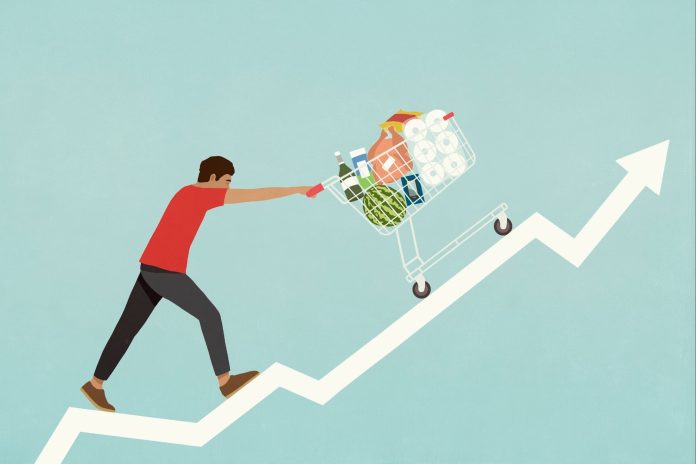The consumer price index (CPI), which tracks the changes in prices paid by U.S. consumers for goods and services, posted its largest gain in nine months on Wednesday.
However, EY’s Chief Economist Gregory Daco says that doesn’t mean inflation is the issue—consumer spending is.
“While pundits will focus on the pickup in headline inflation, nothing in this report screams reaccelerating inflation,” Daco wrote in a statement shared with Entrepreneur. “Despite all the noise, inflation is no longer a concern.”
The U.S. Bureau of Labor Statistics (BLS) reported on Wednesday that the CPI increased by 0.4% last month and that the energy index accounted for more than 40% of the increase. Energy prices rose 2.6% month over month.
“Idiosyncratic price gains in gasoline and utility gas prices, slightly higher grocery prices, and a surge in airfare drove the headline figure,” Daco stated.
The report backs up his statement: Airline fares rose 3.9% in December, after only increasing 0.4% in November. Gas prices jumped by 4.4% over the month, after a more modest 0.6% November increase, while utility gas prices rose by 2.4% in December compared to a 1% uptick in November.
Related: New Jobs Report Indicates a ‘Strong Economy’ That Is ‘More Resilient Than Anticipated,’ According to Experts
At the same time, core inflation, or price increases of all items without counting the volatile food and energy categories, was lower than expectations. It rose 3.2% over the past 12 months — better than expectations of 3.3%. Core inflation in September, October, and November hovered at 3.3%.
Shelter, which drove 40% of the monthly CPI increase in November, played a much less pivotal part in December. The index only increased 4.6% over the year, which BLS called the smallest one-year increase since January 2022.
According to Daco, the real concern now is not inflation but rather its effects.
“What is a concern is elevated prices deterring consumer spending for many lower to median-income families,” he wrote. Higher prices mean that families in this group spend less.
Several major grocery store items increased in price in December, including cereal and bakery products (1.2%), eggs (3.2%), and dairy (0.2%).
Related: Here’s What the CPI Report Means for Your Wallet, According to JPMorgan and EY Experts
What the CPI Report Means for Rate Cuts
Daco stated that despite core inflation being down, “the inflation mirage” created by the headline CPI will result in the Fed skipping a rate cut at the Federal Open Market Committee meeting later this month.
Still, EY is expecting three rate cuts in 2025 in March, June, and September, he said.
Related: Here’s How a Fed Rate Cut Will Affect Mortgage Rates, According to a 40-Year Veteran of the Real Estate Industry
Create your very own Auto Publish News/Blog Site and Earn Passive Income in Just 4 Easy Steps







